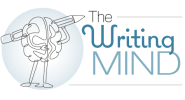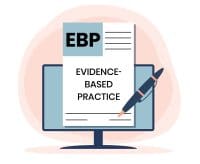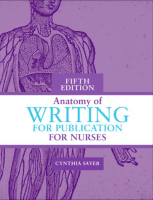Many factors go into an effective article, from an enticing introduction to compelling visuals and a powerful conclusion. But one factor sometimes overlooked is the use of inclusive, nonbiased language.
Words matter. The right words can draw a reader into an article, giving them the opportunity to appreciate the points you’re making. But even one wrong word can offend a reader, causing them to stop reading, letting your points go unappreciated. As author Jessamyn West noted, “A broken bone can heal, but the wound a word opens can fester forever.”
When it comes to healthcare, losing a reader can mean losing a life. When patient education materials don’t mesh with someone’s language or culture, care recommendations can go unheeded, leading to negative outcomes. If the language is perceived as offensive, patients can even lose trust in healthcare providers. When it comes to providers, failing to use inclusive, nonbiased language and subsequent loss of important messages can lead to substandard care as a result of lack of knowledge.
Taking action
So how can you ensure inclusive and bias-free writing? The Publication Manual of the American Psychological Association notes two important principles for reducing bias.
- Describe at the appropriate level of specificity. For example:
- Focus on what the reader needs to know within the context of the article. For example, do you truly need to report the race and ethnicity of study participants? If so, then include the reason why.
- Give exact ages when possible instead of using broad terms such as “the elderly.”
- Use income ranges or specific designations (such as below the poverty threshold level for a family of four) rather than general labels such as “low income.”
- Be sensitive to labels.
- Avoid unnecessary “labels” such as “nonadherent.”
- Use person-first language, for instance: “a person with diabetes” rather than “a diabetic.”
- Consider how study participants of a particular community refer to themselves; however, be aware that preference differences exist.
Be particularly aware of sensitive areas such as age, ability and disability, religion, socioeconomic status, sex and gender, and immigration status.
In “Health equity guiding principles for inclusive communication,” the CDC provides these key principles:
- Avoid use of adjectives such as vulnerable, marginalized, and high-risk. These vague terms imply the condition is inherent to the group rather than the result of causal factors. For example, rather than “underserved communities,” write “communities that are underserved by/with limited access to [specific service/resource].”
- Avoid dehumanizing language. As noted earlier, patient-first language is preferred.
- Remember that many types of subpopulations exist. For example, instead of “ethnic groups,” specify the population.
- Avoid saying target, tackle, combat, or other terms with violent connotation when referring to people, groups, or communities. You might, for instance, use “eliminate” or “eradicate” a disease instead of “war against.”
- Avoid unintentional blaming. Consider if the language you use could lead to negative assumptions, stereotyping, stigmatization, or blame. For example, if you don’t know why people aren’t obtaining vaccines, writing “people who are unvaccinated” or “people who have yet to be vaccinated” is likely better than “people who refuse to be vaccinated.”
Several resources can help you in achieving the goal of inclusive communication:
- Advancing Health Equity: A Guide to Language, Narrative and Concepts. This guide from the American Medical Association, available as a free PDF download, discusses the importance of language in promoting health equity, provides a link to commonly used words/phrases with equity-focused alternatives, and contains a glossary of key terms related to health equity.
- Bias-Free Language. Sections on this American Psychological Association website include general principles for reducing bias, historical context, and information related to specific areas such as gender and disability.
- Conscious Style Guide. This website includes general information and links to resources and articles related to specific areas of interest such as age and ability and disability.
- Health Equity Guiding Principles for Inclusive Communication. In addition to key principles, this CDC guide includes preferred terms for select population groups and communities and a discussion on use of inclusive images. The guide can be viewed online and downloaded as a PDF.
- The Diversity Style Guide. Geared toward journalists and other media professionals, this website has a database of terms related to race/ethnicity, disability, immigration, sexuality and gender identity, drugs and alcohol, and geography. Appropriate and inappropriate usage is noted.
Language evolves, so it’s important to be alert to changes in preferences. Keeping current will help ensure your writing is as effective as possible.
 Hi, I’m Cynthia Saver, MS, RN, owner of CLS Development, which provides writing and editing services, and editor of Anatomy of Writing for Publication for Nurses, 4th ed. I’m also past editorial director for American Nurse Journal.
Hi, I’m Cynthia Saver, MS, RN, owner of CLS Development, which provides writing and editing services, and editor of Anatomy of Writing for Publication for Nurses, 4th ed. I’m also past editorial director for American Nurse Journal.
I’ve been a full-time professional nurse writer and editor for many years, and that doesn’t count the writing I did as I fulfilled my nursing roles in clinical, research, education, and management. My passion is helping nurses share their expertise through the written word, including, but not limited to, publication. Writing can be scary and intimidating. I hope to make it less so and to help you develop your writing skills the same way you’ve developed your nursing skills.
Whether you’re considering your first or your 50th publication, want to contribute to your organization’s newsletter, or crave to be a better communicator online and in print, I hope you’ll find what I write helpful. The nurse publishing colleagues I’ve learned from over the years (many of whom are contributors to my book) may not be listed by name, but I’m grateful for their willingness to share. In that spirit, I’m looking forward to sharing with you! If you have feedback, feel free to email me at csaver57@gmail.com.
References
American Psychological Association. Publication Manual of the American Psychological Association. 7th ed. Washington, DC: American Psychological Association; 2019.
Centers for Disease Control and Prevention. Health equity guiding principles for inclusive communication. 2023. cdc.gov/healthcommunication/Health_Equity.html



















